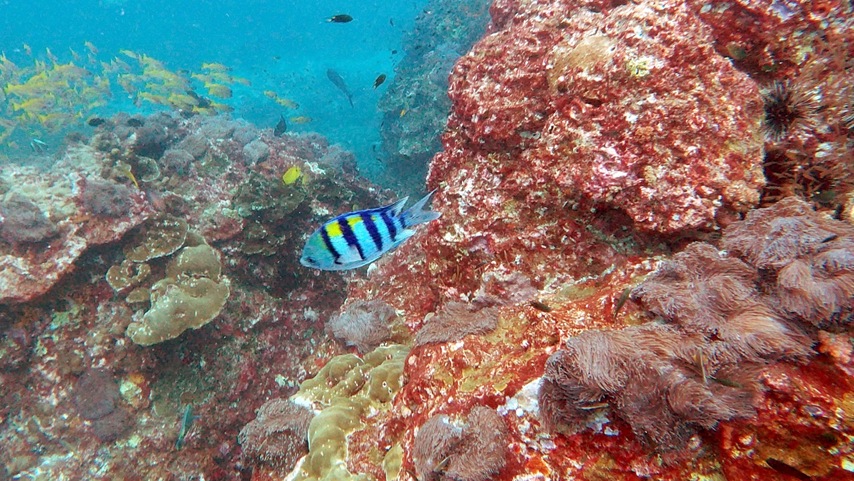This blog post is provided by Minami Sasaki, Kelsey M. Kingsbury, David J Booth and Ivan Nagelkerken and tells the #StoryBehindthePaper for the paper “Body size mediates trophic interaction strength of novel fish assemblages under climate change”, which was recently published in Journal of Animal Ecology. In their study, they investigate how fish species changing ranges and sizes due to climate change interact. They explore what happens when tropical fish species move into temperate fish species traditional ranges, specifically exploring dietary overlap.
In our oceans, poleward boundary ocean currents are getting stronger and warmer due to the effects of climate change. This is pushing fish towards regions cooler than their original distributions. When these fish move to new places, it sets up some interesting situations where they meet other fish that already live there. Scientists have recently been studying the outcomes of these interactions, but there is still a lot we don’t know, for instance, how future global warming might reshape these new fish interactions.
Ocean warming, a consequence of climate change, has significant implications for the animals that live there. As water temperatures get warmer, fish are changing in size. Some are getting larger, some smaller. This can change what they eat and how they interact with each other. This is why understanding the role of body size in driving these interactions is critical.
A recent study published in the Journal of Animal Ecology investigated these complex interactions. We sampled groups of tropical fish that are moving to new areas where local temperate fish species live off the east coast of Australia – a natural laboratory representing a global warming hotspot. We assessed if these tropical and temperate fishes that now live together eat the same prey, by looking at what was in their stomachs and examining their muscle makeup (using stable isotope signatures). Next, we analysed whether tropical and temperate fish eat the same prey when they are similar in size, or if that changes if these fishes are of different sizes.

We found that fish that are similar in size tend to eat similar prey, even though they were from different places (tropical vs. temperate). But as their size difference increases, they tend to feed on different prey. This pattern was true for both stomach prey composition and muscle isotopes, as well as prey size.
Our study revealed that difference in body size plays an important role when it comes to deciding what food these fish go for. At the time of sampling, tropical species were still smaller than their local counterparts as the temperate environment is still a bit cold for the tropicals. However, as the ocean temperature continues to rise in the future, these tropical species are expected to grow larger. This means they will approach the same sizes as the local temperate fishes, reducing the difference in size between them. As a result, they might start eating more of the same prey, leading to more competition for food.

Additionally, fish that we studied were living in groups of multiple species. The presence of several fish species within a shared habitat is expected to further amplify competitive pressure, which can potentially change food web structure.
While this study focused on the East coast of Australia, the whole idea of fish moving to new areas because of climate change is happening across ocean environments. Therefore, our findings could also apply to other regions in the world where marine species are extending their ranges poleward. By clarifying the role of body size in shaping species interactions, we can gain crucial insights into the dynamics of species interactions in a changing world.
Read the paper
Read the full paper here: Sasaki, M., Kingsbury, K. M., Booth, D. J., Nagelkerken, I. (2024). Body size mediates trophic interaction strength of novel fish assemblages under climate change. Journal of Animal Ecology, DOI: 10.1111/1365-2656.14079

